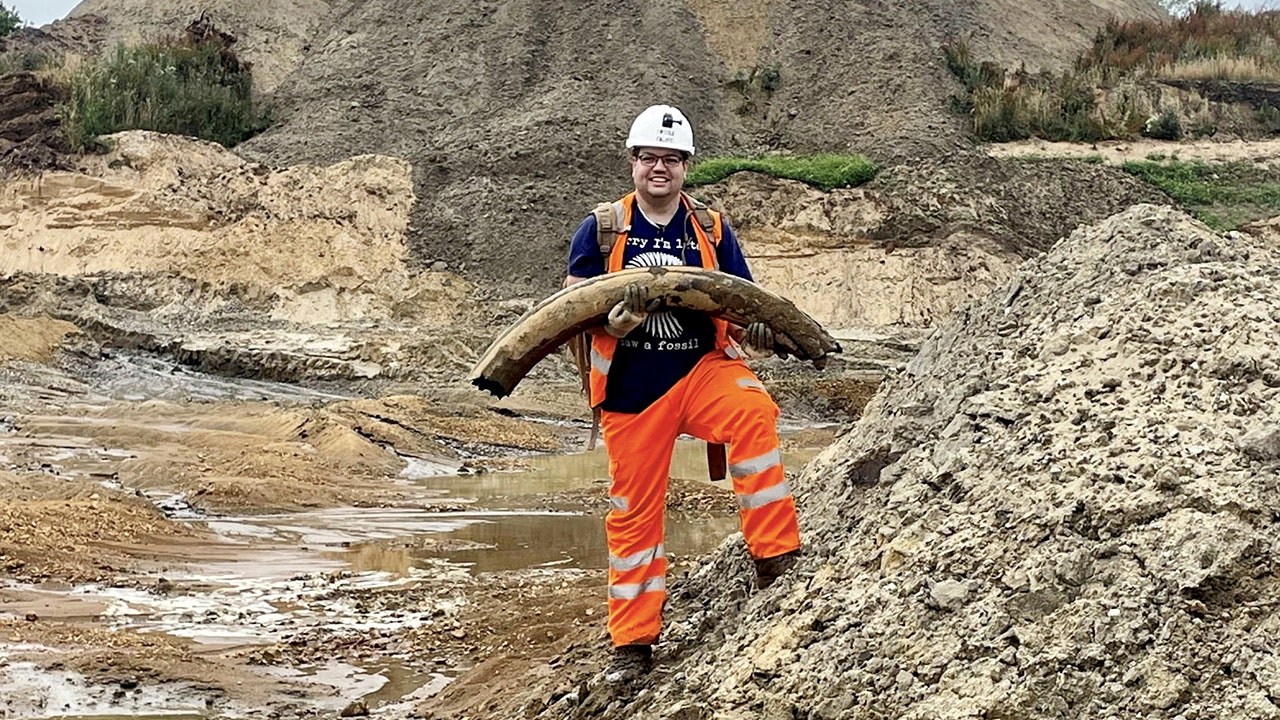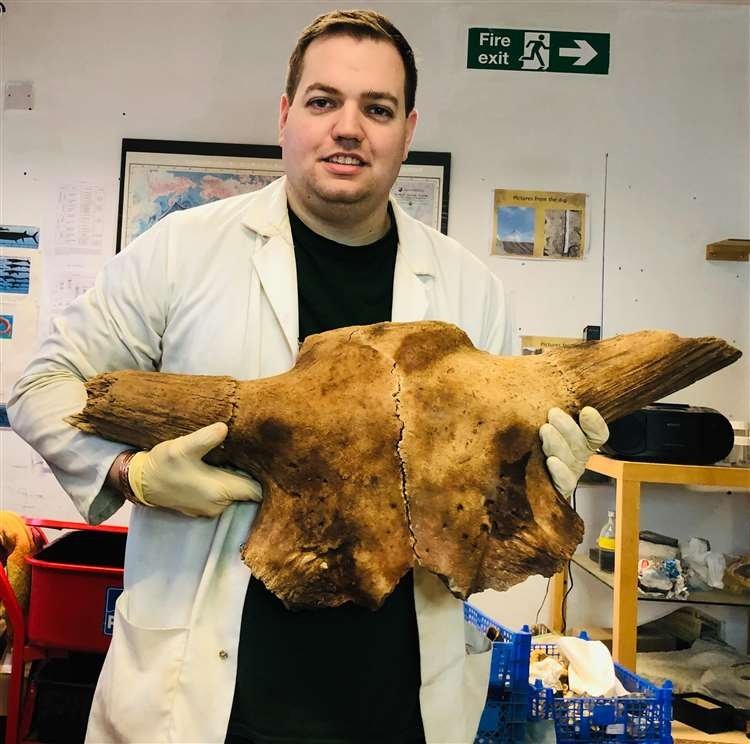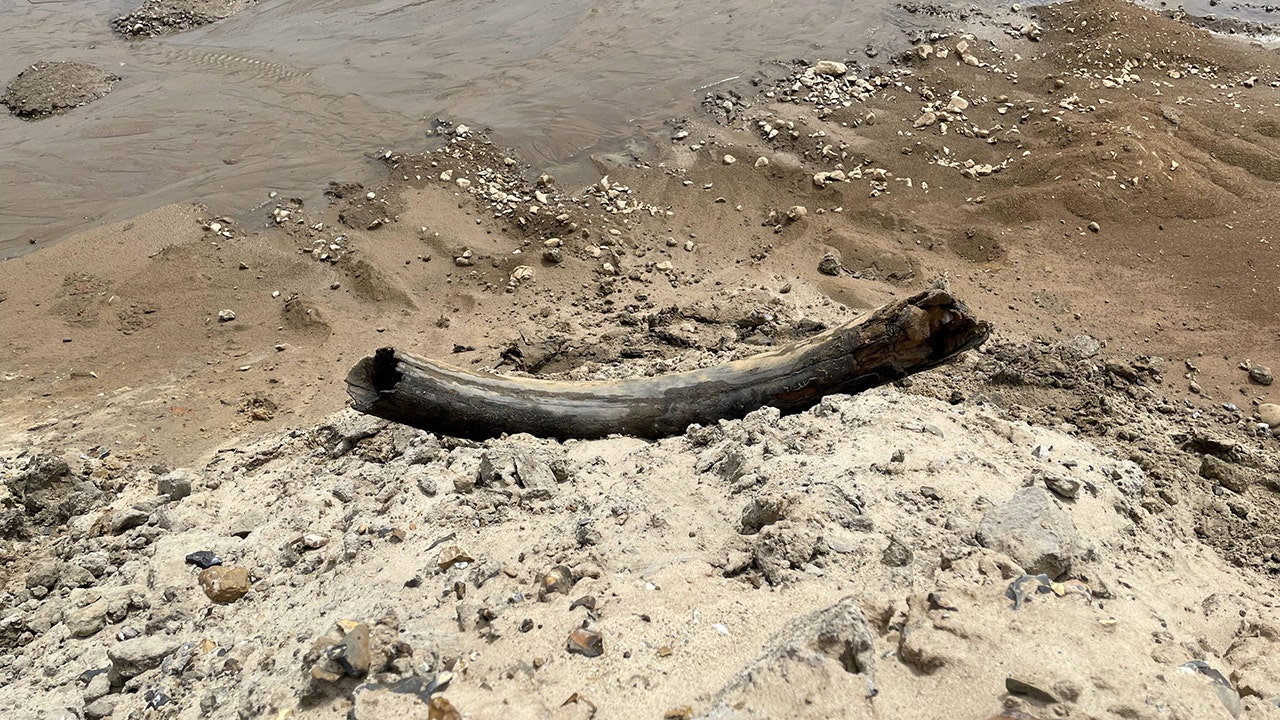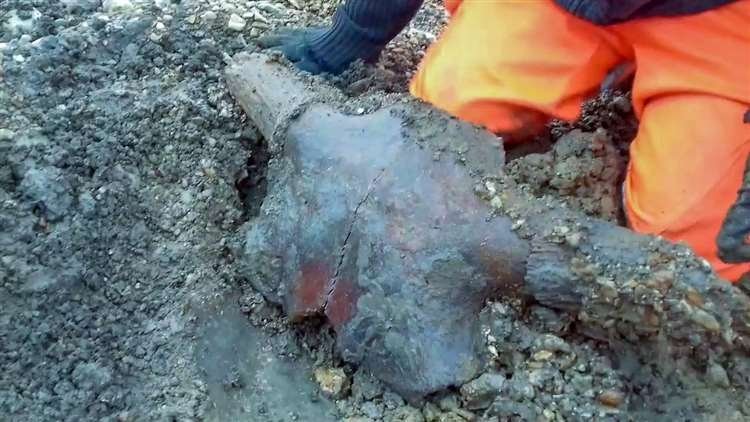Sat 22 July 2023:
An extraordinary archaeological find has emerged from the Cambridgeshire region in the north of England, a remarkably well-preserved mammoth tusk dating back an astounding 450,000 years. The discovery has captured the attention of researchers and enthusiasts alike.
Jamie Jordan, 33, was at a quarry in Cambridgeshire, near Peterborough, England, roughly 75 miles north of London, when he spotted something notable in the rubble.


Paleontologist Jamie Jordan is celebrating a mammoth discovery after finding a four-foot-long tusk in a quarry near Peterborough.
The four-foot-long mammoth tusk was “sticking out like a sore thumb,” he told SWNS.
“I could not believe my eyes,” Jordan recalled of the moment, as SWNS, the British news service, reported.
The tusk is believed to belong to a steppe mammoth from before the last ice age.
“The mammoth itself would have looked like a much bigger version of a modern-day elephant — up to 13 feet tall, and weighing 14 tons,” noted the Peterborough Telegraph.


Paleontologist Jamie Jordan, 33, uncovered the 450,000-year-old tusk, believed to have belonged to a steppe mammoth before the last ice age. (SWNS)
Jordan, who reportedly found his first fossil when he was a boy of just four years old, said he’d never spotted a full mammoth tusk before — he said they’re normally broken into pieces when quarried.
“It was just on top of the ground. It was very heavy to pick up,” he said, as SWNS reported.

This particular type of mammoth is believed to have lived in herds.
Jordan told Fox News Digital in an email on Saturday, “It’s now a mammoth task to preserve the tusk for generations to come. It will take about six months to fully preserve.”
After finding the rare tusk, Jordan said the fossil was taken to Jamie’s Fossils Galore, a nonprofit paleontology museum, for preservation and examination.

The preservation process includes ensuring the tusk is kept wet to prevent it from damage, according to SWNS.
“We will be spending the next few months working to preserve the tusk — it can take up to six months to do that,” said Jordan.
The staff at Fossils Galore are also working on analyzing a skeleton they found in Surrey in 2017 — an iguanodon dinosaur that lived more than 100 million years ago.
In 2008, they also discovered a nearly complete skeleton of a plesiosaur, according to reporting by the Good News Network.
SOURCE: INDEPENDENT PRESS AND NEWS AGENCIES
______________________________________________________________
FOLLOW INDEPENDENT PRESS:
TWITTER (CLICK HERE)
https://twitter.com/IpIndependent
FACEBOOK (CLICK HERE)
https://web.facebook.com/ipindependent
Think your friends would be interested? Share this story!





